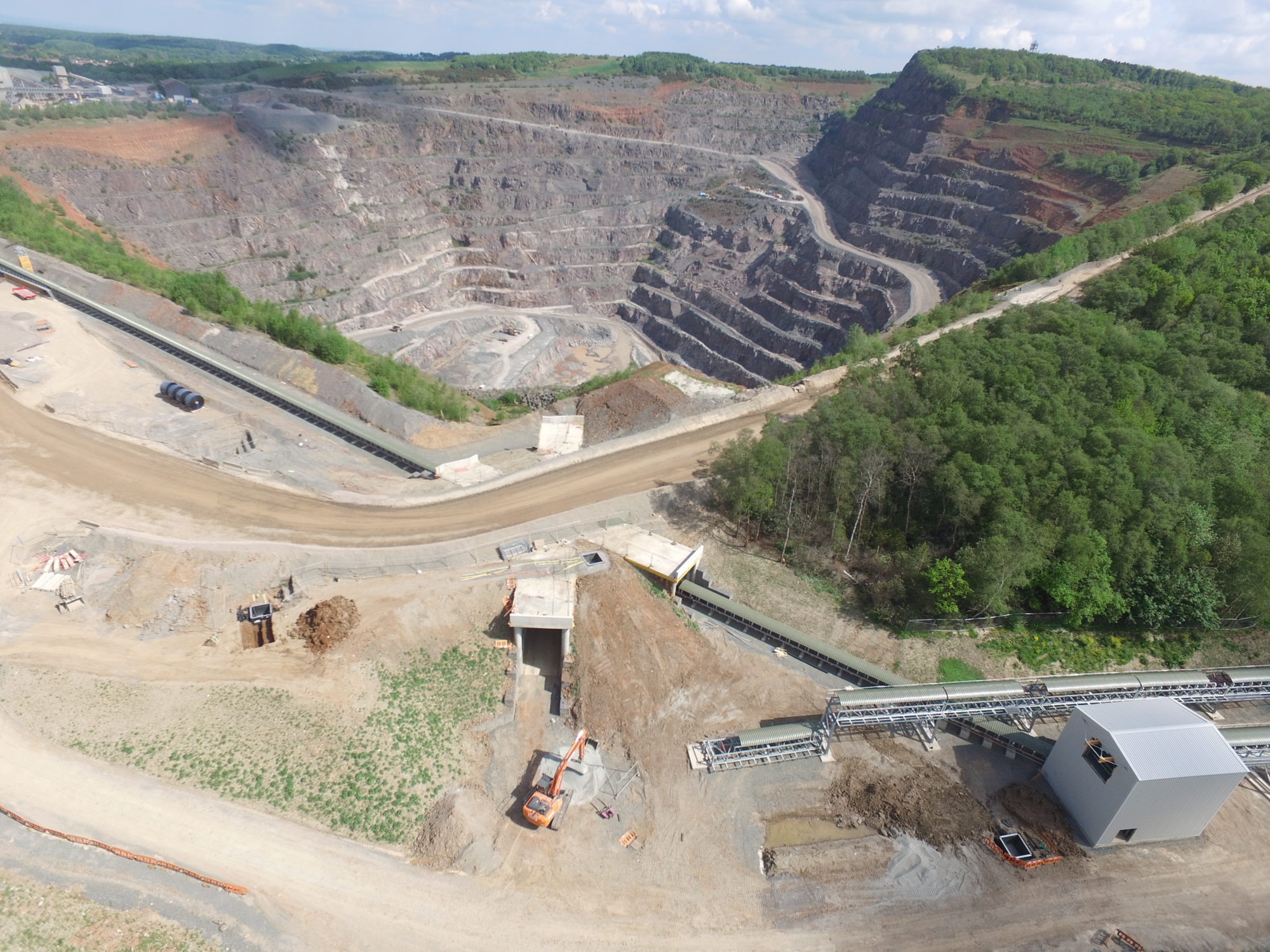A Doppelmayr RopeCon® system is to help Aggregate Industries with an innovative backfill solution at its Bardon Hill quarry, in Leicestershire, England.
Aggregate Industries has recently developed a new quarry extension at this strategically important site, one of the UK’s oldest continuously operated quarries, extending mineral production for a further 27 years, according to Doppelmayr.
During the initial 14 years of production, over 12 Mcu.m of overburden must be progressively extracted. This will be processed and conveyed for emplacement within the existing exhausted quarry to a depth of 125 m.
A road haulage solution was not permitted due to the generation of considerable CO2 emissions, while a conventional conveyor system would have been very costly due to the length and number of transfer points required to navigate the existing quarry haul roads, according to Doppelmayr.
“An innovative and sustainable solution was therefore required to minimise the impact upon local residents, wildlife and the environment,” it said.
Other operational constraints included the requirement to minimise the drop height from material discharged into the quarry and to allow continuous operation of the delivery conveyor without compromising the use of heavy mobile equipment to handle and place the delivered overburden.
To address these complex requirements of Aggregate Industries, Austria-based Doppelmayr has developed a novel solution for the backfill system. The proven RopeCon system, a combination of ropeway technology and conventional conveying technology, will span 850 m across the entire pit with track ropes. The belt, which transports the overburden, moves on these steel wire track ropes and the material can be transferred onto a second belt directly in the rope span.
“This creates a second discharge point at a distance of approximately 100 m from the first discharge point,” Doppelmayr said. “Depending on where the material is needed, either the first or the second discharge point can be used.”
To solve the problem of the drop height, a concept has been developed that gradually reduces the sag as the backfill progresses. The drop height can thus be kept below 45 m at all times to minimise the impact from noise and dust during operation of the system, Doppelmayr said.
The contract was signed in March 2019 and the system is due to be operational in December 2020 where it will transport approximately 1,000 t/h of overburden over a distance of 500 m.











